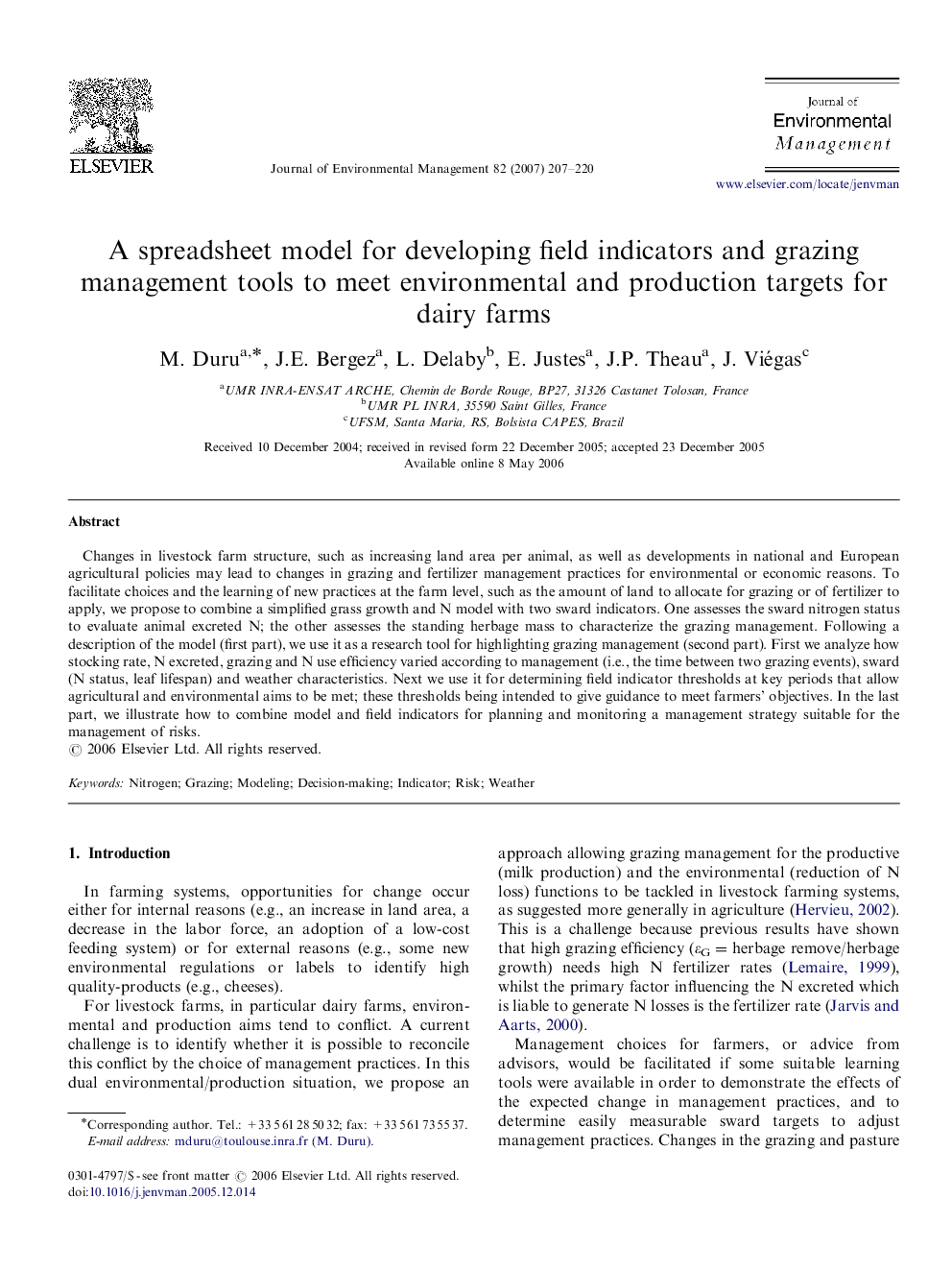| Article ID | Journal | Published Year | Pages | File Type |
|---|---|---|---|---|
| 1057891 | Journal of Environmental Management | 2007 | 14 Pages |
Changes in livestock farm structure, such as increasing land area per animal, as well as developments in national and European agricultural policies may lead to changes in grazing and fertilizer management practices for environmental or economic reasons. To facilitate choices and the learning of new practices at the farm level, such as the amount of land to allocate for grazing or of fertilizer to apply, we propose to combine a simplified grass growth and N model with two sward indicators. One assesses the sward nitrogen status to evaluate animal excreted N; the other assesses the standing herbage mass to characterize the grazing management. Following a description of the model (first part), we use it as a research tool for highlighting grazing management (second part). First we analyze how stocking rate, N excreted, grazing and N use efficiency varied according to management (i.e., the time between two grazing events), sward (N status, leaf lifespan) and weather characteristics. Next we use it for determining field indicator thresholds at key periods that allow agricultural and environmental aims to be met; these thresholds being intended to give guidance to meet farmers’ objectives. In the last part, we illustrate how to combine model and field indicators for planning and monitoring a management strategy suitable for the management of risks.
